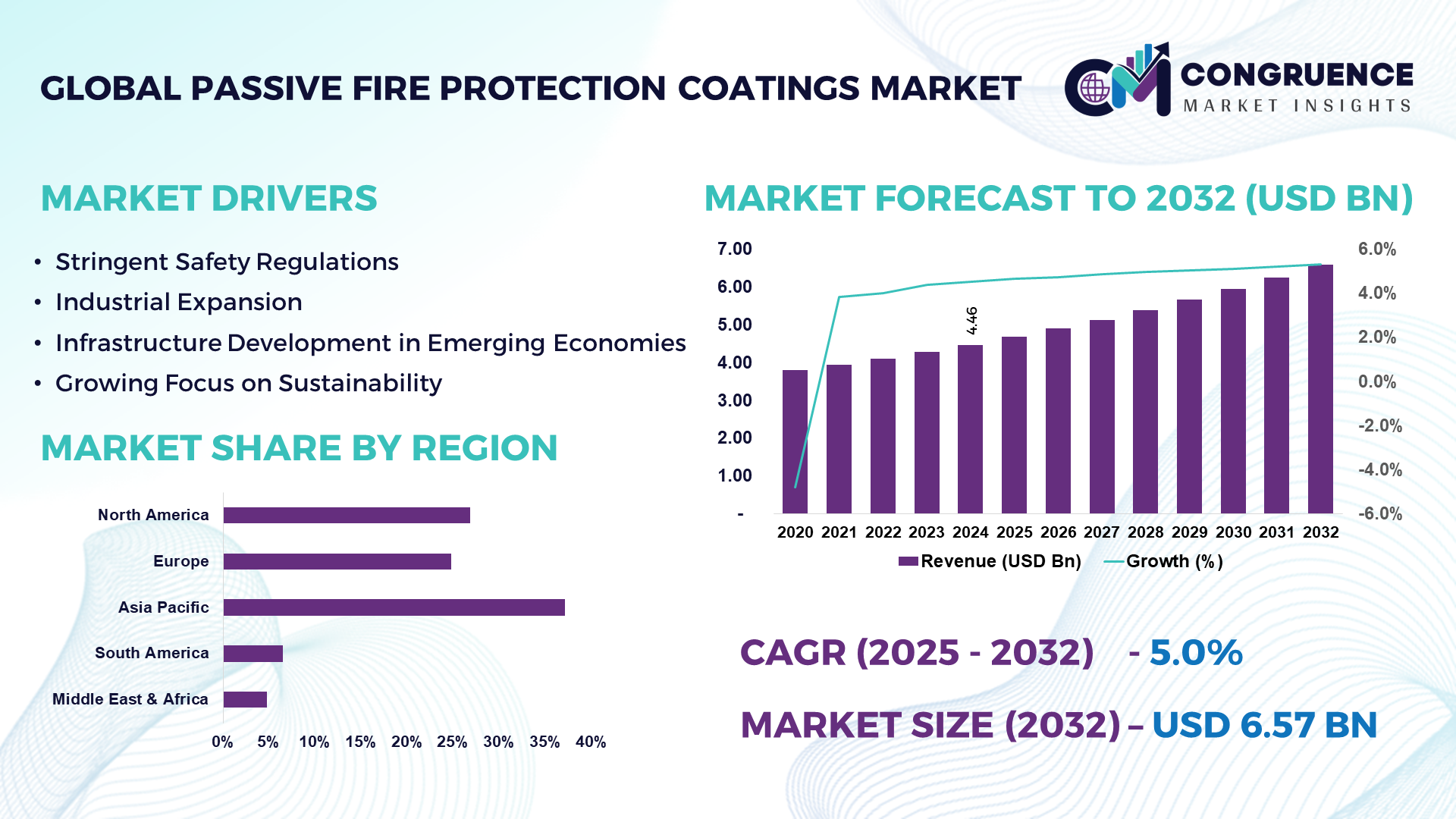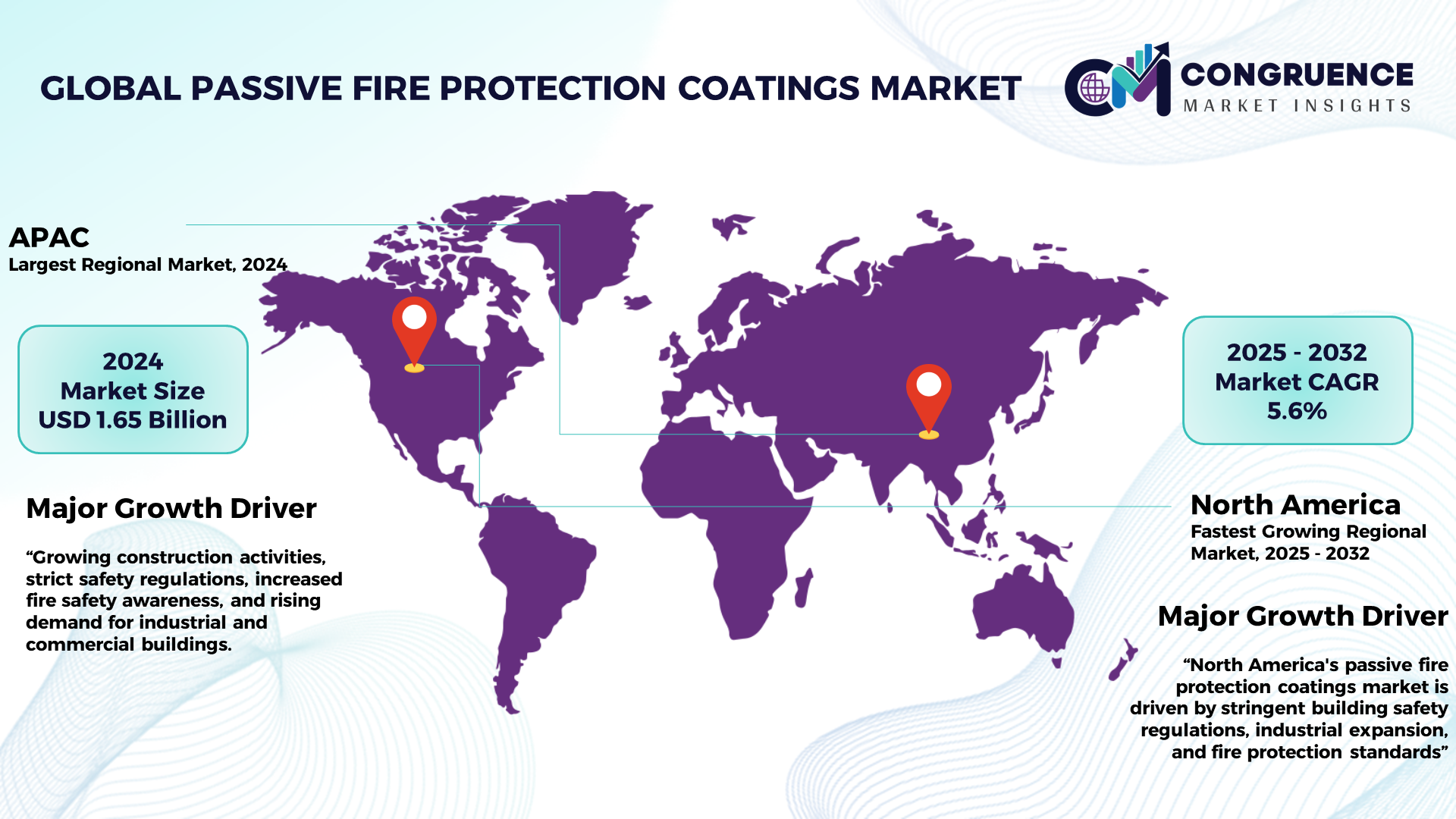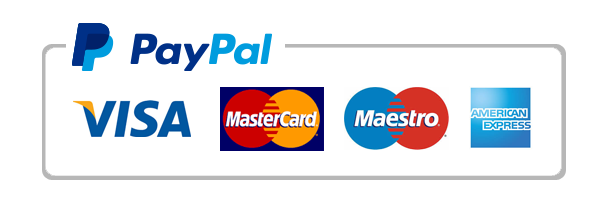Reports
Passive Fire Protection Coatings Market Size and Forecast 2025 to 2032
The Global Passive Fire Protection Coatings Market was valued at USD 4.46 Billion in 2024 and is anticipated to reach a value of USD 6.57 Billion by 2032 expanding at a CAGR of 5.2% between 2025 and 2032. The market is expanding due to the increased focus on safety standards, as well as the growth of industry and urbanization. Due to growing investments in the building industry, strict fire safety regulations, and quick infrastructure development, Asia Pacific had the greatest market share in 2024.

To Learn More About This Report, Request A Free Sample Copy
Coatings known as passive fire prevention (PFP) are crucial safety precautions that preserve the structural integrity of buildings and industrial facilities during a fire by slowing the spread of flames. When exposed to high temperatures, these coatings create an insulating layer that protects steel walls, buildings, and other essential elements. PFP coatings are frequently utilized in sectors where fire dangers present serious threats, including construction, oil and gas, automotive, and chemical industry. Growing building activity, stricter safety laws, and increased industry-wide knowledge of fire safety standards are the main factors propelling the market. PFP coatings are among the advanced fire protection technologies that industries are being forced to implement as a result of governments and regulatory agencies throughout the world enforcing higher fire safety regulations. The development of eco-friendly coatings that provide improved protection while lowering hazardous emissions during fire accidents is also being aided by the global emphasis on sustainability.
How AI is Transforming Passive Fire Protection Coatings Market
AI is transforming the passive fire protection coatings business by increasing efficiency, predicting maintenance, and boosting safety. Manufacturers are able to create coatings with better fire resistance, cut waste, and optimize production processes thanks to AI-driven systems. AI helps producers customize coatings to match the unique fire protection requirements of different industries using sophisticated data analytics, guaranteeing adherence to strict safety regulations.
AI is also revolutionizing PFP coating monitoring and inspection in commercial buildings and industrial facilities. Real-time data and predictive maintenance alerts are provided by AI-powered sensors and systems that continuously check the efficacy and integrity of fire prevention coatings. By identifying tiny flaws or wear in coatings before they become serious, this technology lowers the chance of fire occurrences and guarantees prompt repairs or replacements.
AI is also essential for improving fire risk modeling and simulation, which helps engineers and architects create structures and buildings with the best fire safety features. Industries can increase operating efficiency, save maintenance costs, and enhance overall safety in fire-prone areas by incorporating AI into fire safety systems.
Passive Fire Protection Coatings Market Major Driving Forces
· Stricter Safety Regulations: In order to maintain compliance and protect people and property, governments and regulatory agencies are imposing more stringent fire safety standards, which are requiring industry to use passive fire protection coatings. Demand is also being driven by an increase in both residential and commercial construction operations.
· Industrial Expansion: PFP coatings are becoming more and more necessary as a result of the expansion of sectors including chemicals, oil and gas, and the automotive industry. Fire protection is crucial in these businesses because they operate in high-risk settings where fire threats are a continual worry.
· Infrastructure Development: As a result of large investments in infrastructure brought about by the rapid urbanization of rising nations, especially those in Asia Pacific, there is a greater need for fire safety measures in the building industry.
· Sustainability Focus: Eco-friendly PFP coatings have been developed as a result of the increased focus on sustainable building techniques. These coatings support international sustainability goals by lessening the environmental effect of production and use.
Passive Fire Protection Coatings Market Key Opportunities
· Growth of the Oil and Gas Industry: Because refineries and petrochemical plants are at a high risk of fire, the oil and gas industry offers a lot of potential for the use of passive fire protection coatings. The need for sophisticated fire safety solutions will grow as more money is invested in new projects and refineries.
· Green Building Initiatives: The demand for ecologically friendly fire prevention coatings is being driven by the growth of green building certifications and sustainable construction methods. It is anticipated that this trend would give producers the chance to build coatings that adhere to strict environmental standards.
· Advancements in Coatings Technology: Growth prospects are presented by developments in coating technologies, such as intumescent coatings with enhanced durability and fire resistance. Additionally, innovations aimed at lowering emissions of volatile organic compounds (VOCs) during coating application are becoming more popular.
· Increasing Urbanization in Underdeveloped Areas: There is a significant chance for market expansion as the necessity for fire safety systems in residential and commercial buildings rises due to the rapid urbanization of developing nations.
Passive Fire Protection Coatings Market Key Trends
· Eco-friendly PFP coatings that reduce hazardous emissions and adhere to strict environmental laws are becoming more and more popular as a result of growing environmental consciousness.
· Owing to their exceptional performance in high-temperature settings, intumescent coatings—which expand when heated and offer fire resistance—are becoming more and more popular.
· One important trend in guaranteeing the long-term efficacy of passive fire protection coatings is the incorporation of AI-driven monitoring and inspection systems.
· Multi-functional PFP coatings, which provide further advantages like thermal insulation and corrosion resistance, are becoming more and more popular in the market. These coatings give complete protection in industrial settings.
· As safety standards tighten, especially in areas with aging infrastructure, PFP coatings are increasingly being used to retrofit older buildings and industrial facilities.
Region-wise Market Insights
Asia Pacific accounted for the largest market share at 37.1% in 2024 however, North America is expected to register the fastest growth, expanding at a CAGR of 5.6% between 2025 and 2032.

To Learn More About This Report, Request A Free Sample Copy
Asia Pacific market is driven by rapid infrastructure development, increased construction activity, and stringent fire safety requirements in countries such as China, India, and Japan. The demand for passive fire protection coatings has increased due to the region's industrial growth, especially in the chemical, automotive, and oil and gas industries. Because of its growing industrialization and building sector, the Asia Pacific market is anticipated to maintain its dominant position in the world economy.
· In October 2024, Sherwin-Williams supplied advanced fire-resistant coatings for a $132 million office building in Blackpool, UK. The coatings, including FIRETEX® FX6002, were applied to protect the structure's steel frame, enhancing fire safety and durability in a highly corrosive environment. The project is set for completion in March 2025.
North America is expected to increase at the quickest rate, with a compound annual growth rate (CAGR) of 5.6% from 2025 to 2032. The need for PFP coatings in residential, commercial, and industrial applications is being driven by the region's strict fire safety regulations as well as an increasing emphasis on sustainable building techniques. Because of its strong industrial sector and large infrastructure investments, the United States is the main market in North America.
Another sizable market is Europe, especially for green building projects. Stricter energy and fire safety laws are being implemented in nations such as Germany and the UK, which is driving up demand for cutting-edge fire prevention systems.
Recent Developments
· In June 2023, Jotun completed a major expansion of its Global Intumescent R&D Laboratory in Flixborough, UK. The facility, now doubled in size, will focus on developing fire protection coatings for the infrastructure and energy sectors, with advanced testing capabilities for the SteelMaster and Jotachar product lines.
· In June 2022, Hempel launched Hempafire XTR 100, an epoxy intumescent coating designed for hydrocarbon passive fire protection (PFP) in oil and gas facilities. It offers UL 1709-certified protection, extends steel's load-bearing capacity for up to four hours, and enhances safety during hydrocarbon pool fires by allowing more time for evacuation and fire response.
· In February 2020, PPG supplied fire-resistant and sustainable coatings for the world’s largest airport terminal at Beijing Daxing International Airport. The coatings included PPG STEELGUARD™ FM 550 for fire protection and other advanced coatings for weather resistance and durability, promoting sustainability through extended lifespan and reduced environmental impact.
Market Competition Landscape
The global passive fire protection coatings market is fiercely competitive, with numerous major competitors concentrating on increasing their market share through innovation, mergers, and collaborations. To address the changing needs of industries like construction, oil and gas, and chemical manufacture, major corporations are spending more money on research and development to improve the performance and sustainability of their goods. Players who supply products that adhere to strict environmental laws obtain a competitive benefit as a result of the trend towards eco-friendly coatings. Additionally, to expand their market reach, major businesses are also establishing partnerships and strategic alliances with the industrial and construction industries. Market participants are concentrating on geographical expansion and product portfolio diversification as the need for passive fire protection coatings increases in emerging countries, especially in Asia Pacific and North America.
Key players in the global passive fire protection coatings market implement various organic and inorganic strategies to strengthen and improve their market positioning. Prominent players in the market include:
· Akzo Nobel N.V.
· PPG Industries, Inc.
· The Sherwin-Williams Company
· Jotun Group
· Hempel A/S
· Sika AG
· 3M
· Carboline Company
· Kansai Paint Co., Ltd.
· RPM International Inc.
· BASF SE
· Nullifire
· Promat International
· Wacker Chemie AG
|
Report Attribute/Metric |
Details |
|
Market Revenue in 2024 |
USD 4.46 Billion |
|
Market Revenue in 2032 |
USD 6.57 Billion |
|
CAGR (2025 – 2032) |
5.2% |
|
Base Year |
2024 |
|
Forecast Period |
2025 – 2032 |
|
Historical Data |
2020 to 2024 |
|
Forecast Unit |
Value (US$ Bn) |
|
Key Report Deliverable |
Revenue Forecast, Growth Trends, Market Dynamics, Segmental Overview, Regional and Country-wise Analysis, Competition Landscape |
|
Segments Covered |
· By Type (Intumescent Coatings, Cementitious Coatings) · By Technology (Water-Based, Solvent-Based) · By Application (Structural Steel Protection, Oil & Gas, Automotive, Marine, Building & Construction) · By End-Use Industry (Oil & Gas, Automotive, Construction, Marine, Aerospace) |
|
Geographies Covered |
North America: U.S., Canada and Mexico Europe: Germany, France, U.K., Italy, Spain, and Rest of Europe Asia Pacific: China, India, Japan, South Korea, Southeast Asia, and Rest of Asia Pacific South America: Brazil, Argentina, and Rest of Latin America Middle East & Africa: GCC Countries, South Africa, and Rest of Middle East & Africa |
|
Key Players Analyzed |
Akzo Nobel N.V., PPG Industries, Inc., The Sherwin-Williams Company, Jotun Group, Hempel A/S, Sika AG, 3M, Carboline Company, Kansai Paint Co., Ltd., RPM International Inc., BASF SE, Nullifire, Promat International, Wacker Chemie AG |
|
Customization & Pricing |
Available on Request (10% Customization is Free) |
